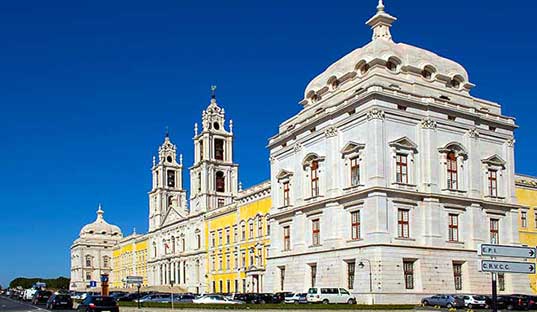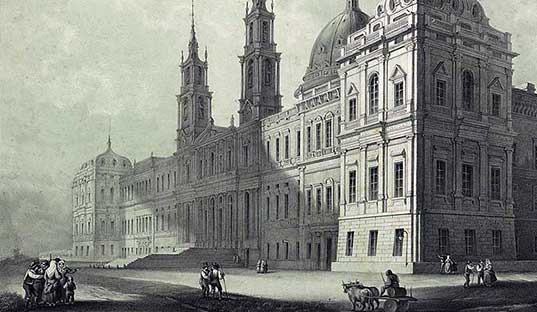Palácio de Mafra
Work began on the massive palace and monastery at Mafra in 1717 after Joao V vowed to build a monastery in gratitude for the birth of an heir. It was a modest building at first, intended to house a small number of monks, but as more ships arrived in Portugal bringing more wealth from the New World, more extravagant plans were made. Altogether 52,000 men worked on the building which, when finished, could cater for 330 friars, housed a royal place and one of Europe’s finest libraries with some 40,000 volumes. Celebrations lasted for eight days when the Basilica was consecrated on the Kings 41st birthday. Joao V died in Lisbon on July 31 1750.
Successive monarchs treated the palace as a hunting lodge. When the family left for exile in Brazil in 1807, they took the bulk of the furniture with them. As troops assembled to stem Napoleon's invasion, Mafra became a military base and the monastery a barracks.
Nowadays, this building ensemble is partially under IPPAR's rule which is developing a recovery and improvement Programme, after a previous study carried out between 1994 and 1997. A top priority has been the recovery of the historical organs.
Successive monarchs treated the palace as a hunting lodge. When the family left for exile in Brazil in 1807, they took the bulk of the furniture with them. As troops assembled to stem Napoleon's invasion, Mafra became a military base and the monastery a barracks.
Nowadays, this building ensemble is partially under IPPAR's rule which is developing a recovery and improvement Programme, after a previous study carried out between 1994 and 1997. A top priority has been the recovery of the historical organs.













